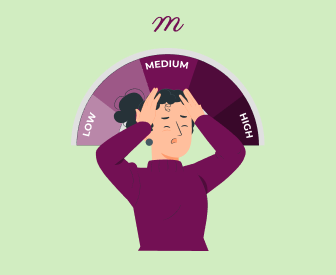Have your progress notes written for you automatically
Building clients’ self-esteem is more than sharing their experiences during therapy. In many circumstances, therapists must take action to improve their client’s self-confidence.
This article aims to guide therapists who seek to improve clients self-esteem. Clients with healthy self-esteem have better mental health outcomes. They also have reduced levels of anxiety and can handle difficult situations.
Self-Esteem and Mental Health
Self-esteem refers to the level of worth we place on ourselves. It is how we value ourselves. Self-image, self-worth, and self-confidence are the three pillars of self-esteem. They are about how we see, value, and believe in ourselves.
Low self-esteem causes people to avoid challenges and yet worry about judgment from others. While people who have a high sense of self-worth view challenges as opportunities to grow.
Techniques for Improving Client Self-Esteem in Therapy Sessions
Therapists can build their clients’ self-esteem by using the following techniques:
1. Engaging in Self-Compassion Exercises
This helps clients to become kind and understanding to themselves. It can be practiced through the following:
- Mindfulness Exercises: When a client is upset, they can place a hand on their chest. Direct them to develop compassionate thoughts. Teach them to use affirmations like “I accept myself as I am“.
- Change Inner Conversations: Teach clients to replace unkind statements with kind ones. Promote the idea that they should speak to themselves in a way that they would assure a friend. Help them develop a response strategy that accepts mistakes while being understanding.
- Real-Life Applications: Ask clients to write letters that show kindness towards themselves. Teach them to develop soothing statements in difficult situations. Clients should have a self-care toolkit for difficult times.
- React With Compassion: Therapists ought to always react to their clients with empathy. The goal of this is to build trust in the therapeutic alliance. Maintaining a weekly record of achievements can help clients share successes during sessions. Therapists should avoid making judgments when the client is speaking. They must also allow clients to express their emotions.
2. Focusing on the Client’s Strengths
Help clients to see their strengths. Ask your client to investigate any unique abilities that make them special. The client should also reflect on their previous achievements. Ask them to remember three recent achievements. What abilities did they display to reach these accomplishments?
Help them to understand how these skills fit into various domains of their existence. Clients should keep track of their strengths in their journals. Teach them to see mistakes as an opportunity to learn and grow.
3. Setting Realistic Goals
When clients succeed at achieving set goals, they develop self-esteem in the long term. Guide your client through the goal-setting process to establish specific targets. This method builds confidence by recognizing minor accomplishments.
When clients achieve a small goal, they build personal trust. This motivates them to pursue more ambitious challenges. Monitoring progress can be effective with charts, videos, or even photographs. Clients can share successes during sessions by keeping a weekly log of accomplishments.
For Example:
Client can work on improving their social life by:
- Saying hello to a coworker or classmate each day.
- Replying messages instead of ignoring them.
- Starting a short conversation with someone new or reconnecting with an old friend.
Client can increase their productivity levels by:
- Setting a timer and focusing on work or study for 20 minutes.
- Completing one small task i.e., cleaning a desk, organizing a small space or making a to-do list.
Clients can build healthier habits by:
- Taking a short walk of about 10 minutes outside every day.
- Drinking a set amount of water and eating balanced meals.
- Getting at least seven hours of sleep each night.
4. Challenging Negative Thoughts
Negative thoughts have a huge impact on how people see themselves. These thoughts develop into automatic processes and patterns of self-criticism and doubt. Clients can identify these thoughts through daily journaling. Therapists can show clients how to record the situations that produce negative thoughts.
Therapists can take note of the clients’ emotional responses to each of these situations. The client should also write down the frequency of these negative thoughts. Then, the client can test the validity of these thoughts. This will help the clients begin to look for more balanced, realistic and positive ways of thinking.
Behavioral Exercises:
- The client should engage in a reality check. This involves comparing their negative thoughts with actual real facts.
- The client practices having a conversation with an imagined friend facing a similar situation.
- The client can examine events as if they were an outsider observing the situation.
- The client can keep a daily record of experiences to gather proof that these long held negative thoughts and beliefs are untrue. This can be an evidence log.
5. Modeling Healthy Self-Esteem Behaviors
Clients need to surround themselves with supportive people who can contribute to building their self-esteem. Therapists act like more than a guide and should model healthy self-esteem behaviors. Use your therapy sessions to show your genuine self-acceptance. You must help your clients learn to accept themselves completely. This will show them how to develop healthy ways to think about themselves.
As a therapist, you need to recognize your boundaries but avoid self-criticism. Show self-respect through your discussions while maintaining a realistic view of your personality. Establish therapeutic boundaries during all client interactions.
6. Engaging in Self-Care Activities
People need self-care activities to develop a positive self-image. Help the client to create routines that align with their values and interests. A complete self-care routine should include exercises, good sleep, and outdoor activities. They can also express themselves through creative means such as arts, journaling, music, and writing.
Teach clients to incorporate mindfulness practices into their daily routine. These mindfulness practices may include meditation, deep breathing exercises, present-moment awareness, and gratitude exercises.
Cognitive Behavioral Therapy (CBT) Techniques To Improve Self-Esteem
CBT is an effective way to manage low self-esteem. Structured exercises derived from evidence-based sources form the basis of this therapy. Using the cognitive restructuring method, clients can recognize and change their self-defeating and sabotaging thoughts.
CBT for self-esteem involves teaching clients to write down negative thoughts. They also provide supporting and opposing evidence to generate a balanced understanding. Small tests designed to expose self-limiting beliefs are another approach. Some structured CBT exercises include:
- Logging Achievement: The client can keep track of all small daily achievements. Do a weekly review to help the client see the successful activities done. They should also take note of positive things people say about them.
- Assess Client’s Self-Image: The client should examine their self-perception. They should make a plan to achieve the desired self-image. This involves choosing to engage in actions that align with their identity and who they truly desire to become.
- Positivity Log: Check the clients’ record of their experiences to see if they contradict their negative self-view. They should also make a list of positive feedback and successful interactions. The client records strengths when they appear during different circumstances.
Building a Safe Therapeutic Environment to Help Clients Boost Their Self-Esteem
A secure environment offers support that helps clients feel better about themselves. Clients should not fear criticism and feel uncomfortable sharing their vulnerabilities. The healing environment should be quiet and private. The lighting should be dim and the temperature should be relaxing.
It is important to consider the client’s emotional safety. Session scheduling should be regular and interactions should remain confidential. Therapists should also respect the client’s feelings and avoid interruptions. Building trust with the client is key.It is also important to maintain eye contact and not misconstrue what the client says.
There should be respect for the client’s cultural background. Therapists can also change therapy to accommodate diversity.
Conclusion
Building clients’ self-esteem is a process that requires patience and dedication. A strong therapeutic alliance is also very important. It is crucial for therapists to examine personal biases that might affect therapy. It is also important for therapists to celebrate clients’ progress, even the small wins.
As a therapist, you can use Mentalyc to write progress notes faster and save time. It increases your productivity. More importantly, it enables you to focus on providing high-quality care.
FAQs
Are There Other Types of Therapy For Improving Client Self-Esteem Asides CBT?
Yes. There are several therapies for improving self-esteem aside from CBT. They include Acceptance and Commitment Therapy (ACT), Dialectical Behavior Therapy (DBT), Narrative Therapy and Psychodynamic Therapy.
How Long Does It Take To Improve Self-Esteem In Therapy?
To improve self esteem, it depends on various factors such as the type of therapy. Typically, CBT requires between 12-20 sessions for effective results. However, the sessions could last between weeks to months. Sometimes, it lasts more than a year, depending on how severe the case presents. The clients’ willingness and commitment to change also affect how long the treatment will take.
Is Medication Necessary For Improving Self-Esteem?
Medication is not usually necessary for improving self-esteem itself. However, therapists may prescribe medication to treat depression or anxiety, which often accompany low self-esteem. Prescribing medication would largely depend on the severity of these conditions. The primary goal of medication is to reduce the clients’ psychological distress.











